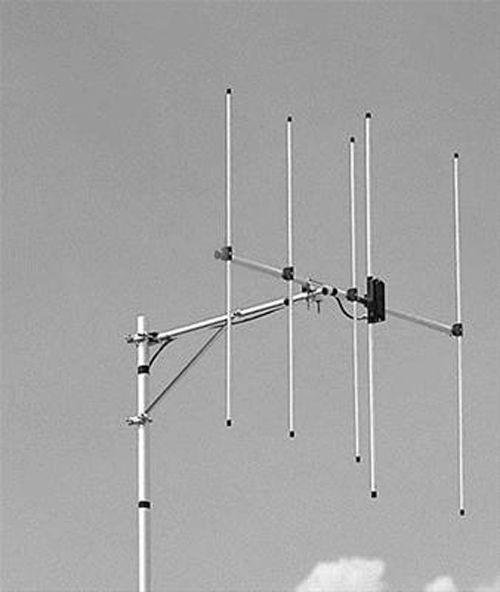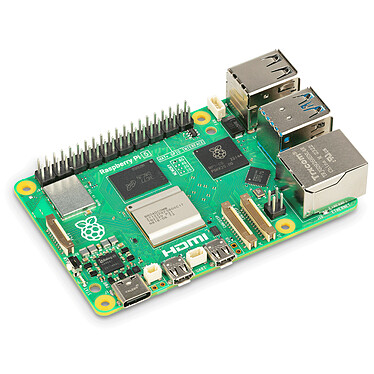CARMELO project
CARMELO (Cheap Amatorial Radio Meteor Echoes Logger) is a new kind of meteoric echoes amateur receiver. Its characteristics are great simplicity and low cost. It is designed to create a wide network of receivers scattered throughout in the world aimed at receiving and recording meteor radio echoes.
Unlike all types of meteoric receivers, it is cheap (less then 250 euros), easy to install and completely automatic. It is therefore within the reach of any amateur, a fundamental characteristic for the creation of a reception network spread everywhere.
Contents
A. Receiving meteor echoes01. What is a meteor radar
02. Listening techniques
03. Counting and measuring radio meteors
B. How to do a CARMELO receiver
01. Outdoor equipments
02. The device
03. Software installation
C. If I don't feel capable of building it by myself
D. The CARMELO network
A. Receiving meteor echoes
What is a meteor radar
A meteoric radar is an apparatus that exploits a physical property of the atmosphere: when a body like a meteor enters the upper layers of the earth's atmosphere at very high speed, it impacts the first ionosphere molecule it encounters along his path.The consequence of this impact is the disintegration of the corpuscle and the ionization of the atoms that compose it.
This event generates ions and free electrons. A long, narrow cylinder made of this plasma is then created along the meteor's trajectory. Its persistence is normally short-term, just the period of time needful for the recombination process of the ions with the free electrons to dissolve it.
For the duration of this short period the free electrons, if they are invested by an oscillating electromagnetic field (a radio transmission), are induced to oscillate with the same transmission frequency and polarization. They therefore behave, in turn, like a transmitter, or if you like, like a repeater.
Consequently, from the radioelectric point of view this cylinder is a reflecting object, similar to an airplane, a satellite or any other flying object. This phenomenon is called “meteor scatter”. If there is a radio transmitter that illuminates a certain portion of the sky and a receiver, tuned to the same frequency, the receiver can pick up the signal emitted by the transmitter for the entire period of time in which the free electrons remain in this form, before their recombination with the ions thus dissolving the radiometeora.

Listening techniques
There are two types of meteoric radars: professional and amateur ones.
Professional radars are “bistatic”, ie they are made up of a transmitting station and one or more receiving stations. They are normally managed by research institutions or universities. These radars transmit modulated impulses on a fixed frequency and this allows the receivers, suitably placed on the ground at several tens or hundreds of kilometers away, to calculate all the meteors phisical characteristic parameters, namely: amplitude, duration, height, direction of origin and trajectory.
Obviously building or buying a transmitter of the necessary power is out of the reach of amateurs. Therfore, amateur observers listen meteors echoes using other people's transmitters.
Normally this listening takes place by tuning a receiver in SSB (Single Side Band Modulation) about one Kilohertz above or below the carrier frequency of the chosen transmitter.
Thanks to this trick, the receiver, in the presence of a meteoric echo (or of other origin), generates a sound equal to the difference in frequency between the received signal and the tuning frequency.
If this difference is one KHz, the radio emits a note (a whistle) on that frequency.
Almost all amateurs stop here, simply listening, or recording the video screens generated by audio signal plotting programs.
Counting and measuring radio meteors
CARMELO is a project born to do much more than this.
In the past we have done an analogic project for this: it was named RAMBO (Radar Astrofilo Meteorico Bolognese, click here).
First of all, CARMELo is entirely digital: it does not use analogue radios and does not work on the audio signal produced by the output of a radio or a computer sound card.
CARMELO directly measures the power and radio frequency coming from the antenna and records these two data in a file using a single standard: each measurement is comparable with any other measurement recorded by any similar device.
B. How to do a CARMELO receiver
Outdoor equipments
First you need an antenna: similarly to a telescope, the antenna, its polarization, its characteristics and its correct positioning determine the quality of the signal that will then be observed. The antenna must be sized to tune to the frequency of the transmitter chosen to make the observations. For example: almost all European observatories use the French Graves military transmitter and therefore antennas on 144 MHz in vertical polarization are needed.The further the antenna is from buildings and ground the better.

After this you need a cable. It must be a coaxial cable for VHF (RG 58 or similar), as short as possible, and headed with a male PL connector on the antenna side and a male SMA connector on the CARMELO side.

Also you need a mast. The mast must be one of the classic antenna ones, the higher the better.

These three components represent the outdoor part of your receiver.
The antenna can be directive or omnidirectional, the choice is similar to that between observing the stars with binoculars or with the naked eye. In the first case, the greater gain in one direction will allow you to observe fainter meteors, but limited to the portion of the sky proportional to the degrees of your antenna. In the second case you will see only stronger meteors but in every direction. When using a directional antenna, it is advisable to aim high: a declination greater than 30 degrees is essential and this value should be increased the closer you are to the transmitter. The antenna is intended exclusively for reception: therefore, it does not necessarily have to be expensive and in fact it can even be self-built.

The device
CARMELO is made up of five components: a Passband filter, a preamplifier, a dongle, a microcomputer such as a Raspberry and a power supply.
The passband filter cut away all the unwanted signals.

The preamplifier has the purpose to lower the noise figure by introducing a gain on the incoming signal.

The dongle contains two integrated circuits: the R820T2 and the RTL2832U. The first carries out tuning on the desired frequency, and the second carries out the analog-digital conversion of the tuned signal. It feeds the LNA too.

The Raspberry performs three tasks simultaneously:
1 - Interfaced with the dongle works like an SDR (Software Defined Radio) radio.
2 - Samples the signal and, for each sampling, carries out the FFT (Fast Fourier Transform). This function allows you to continuously measure the power and frequency of the signal picked up in the antenna. By analyzing the sampling sequence, the software is able to recognize meteoric echoes, discarding interference and false positives.
3 - Converts the sampled signal into a data file which is then sent to the server in real time.

The micro monitor board has to be connect to the Raspberry I-O multi-connector. The monitor board is not essential: with or without CARMELO it still works.

The 5v power supply provides power to the Raspberry, the monitor board and the LNA.

The SD board contains the operative system and our software. 8 Gb is enough.
The COMPLETE list of components with prices and vendors you can find here
When assembling the components, pay attention to the fact that the contacts are perfect: both that of the antenna cable, both the USB and the LAN cable.
It is very important to fix the components and cables to the plate: in this way any traction on the cables will not lead to variations in the contacts. Always keep in mind that CARMELO is not a normal microprocessor, but its union with the dongle makes it a real radio receiver.
If the USB connection between dongle and Raspberry moves CARMELO crashes!
All the hardware produces heat, don't worry if it feels hot: do not box it or prevent air circulation!
Software installation
Once the hardware has been assembled, we now need the software. All the needed software is loaded on the sd card.

If you have a minimum level of confidence with the computer, write to our email address: carmelometeor at gmail.com We will send you instructions regarding the procedure to follow. It is not complicated: first you will install the light version of the Raspberry operating system, then our software. At the end you will create the receiving station data file which will allow you to be "visible" and identified in the CARMELO network and fix the tuner frequency. That's all.
C. If I don't feel capable of building it by myself
You can write a mail to our mail address carmelometeor atgmail.com and ask for a complete assembled and tested CARMELO: an amateur astronomer could do it for you.
D. The CARMELO network
The site you are consulting was created to host the observations regarding meteoric radio echoes made with CARMELO and to show them in real time. On this site there are special pages that show in graphic form the waveforms as they are recorded wherever in the world they come from.Furthermore, the overall result of the network is represented: i.e. the hourly rate.
It is known that meteoric observation, as well as astronomical observation in general, is obviously characterized by the position of the observer on the globe as well as the time and day. These data determine the horizon and therefore what is observable and what is not.
It follows that the observation of a given swarm this year may be optimal in Europe and impossible in the USA, while another year it may be the opposite and so on. A global network, with the data considered as a whole, can record meteor events independently of the geographical positions of a single observer, but acting as if there were a single "earth observer" who encounters and records the meteor showers along its path in the solar system.
Creating such a global network requires a certain number of enthusiasts willing to join the network, and a simple, robust and economical project within everyone's reach, even those who are not radio technicians. In our opinion, CARMELO summarizes these three characteristics and can therefore aspire to be the instrument for this type of global observation.